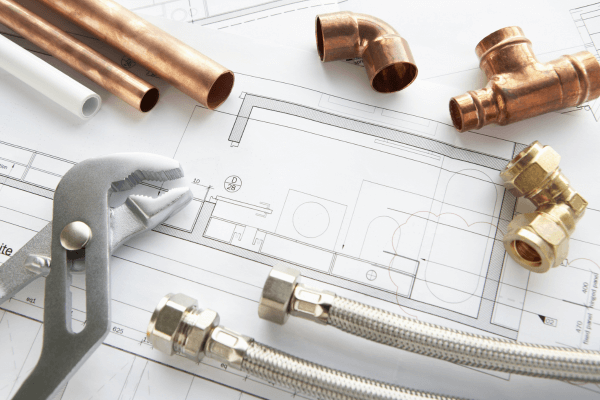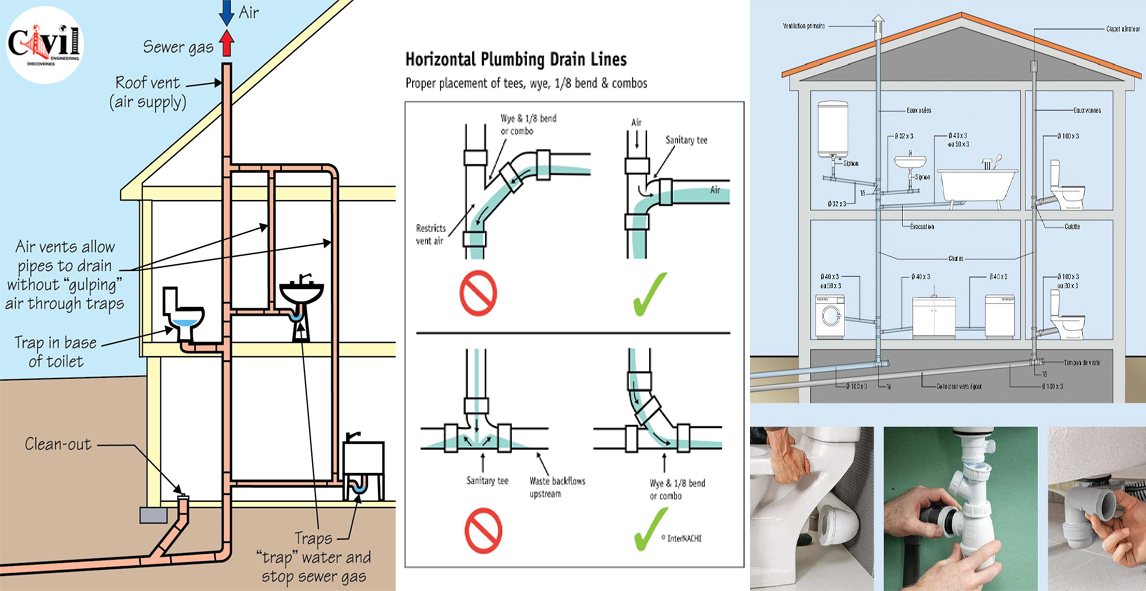Almost everyone seems to have their private piece of advice when it comes to Understanding Your Home's Plumbing Anatomy.

Comprehending how your home's plumbing system functions is crucial for every property owner. From providing tidy water for drinking, cooking, and showering to securely removing wastewater, a well-kept pipes system is critical for your family members's health and comfort. In this detailed overview, we'll discover the detailed network that makes up your home's plumbing and offer ideas on upkeep, upgrades, and handling common issues.
Intro
Your home's pipes system is greater than just a network of pipes; it's an intricate system that guarantees you have access to clean water and reliable wastewater removal. Understanding its components and exactly how they work together can assist you stop pricey fixings and ensure whatever runs smoothly.
Fundamental Elements of a Plumbing System
Pipes and Tubing
At the heart of your plumbing system are the pipelines and tubing that carry water throughout your home. These can be made of different materials such as copper, PVC, or PEX, each with its advantages in regards to durability and cost-effectiveness.
Components: Sinks, Toilets, Showers, and so on.
Components like sinks, commodes, showers, and bathtubs are where water is used in your house. Understanding exactly how these components attach to the pipes system aids in detecting troubles and preparing upgrades.
Valves and Shut-off Points
Valves control the flow of water in your pipes system. Shut-off shutoffs are critical throughout emergency situations or when you require to make fixings, permitting you to separate parts of the system without interfering with water circulation to the whole home.
Water System System
Main Water Line
The main water line connects your home to the community supply of water or a personal well. It's where water enters your home and is distributed to numerous components.
Water Meter and Pressure Regulator
The water meter measures your water usage, while a stress regulatory authority makes certain that water moves at a risk-free pressure throughout your home's pipes system, stopping damages to pipes and fixtures.
Cold Water vs. Warm water Lines
Recognizing the distinction in between cold water lines, which supply water straight from the main, and warm water lines, which carry warmed water from the water heater, aids in fixing and preparing for upgrades.
Drain System
Drain Water Lines and Traps
Drain pipes lug wastewater away from sinks, showers, and commodes to the sewer or septic tank. Catches prevent drain gases from entering your home and also catch debris that might cause blockages.
Air flow Pipes
Air flow pipelines allow air right into the drainage system, stopping suction that can slow drain and cause traps to vacant. Proper air flow is essential for preserving the integrity of your pipes system.
Importance of Appropriate Water Drainage
Making certain proper water drainage avoids back-ups and water damages. Routinely cleansing drains and keeping traps can stop costly repair services and expand the life of your plumbing system.
Water Furnace
Kinds Of Hot Water Heater
Water heaters can be tankless or standard tank-style. Tankless heaters warm water on demand, while tanks keep heated water for instant usage.
Upgrading Your Pipes System
Reasons for Upgrading
Updating to water-efficient fixtures or changing old pipelines can enhance water top quality, minimize water bills, and boost the worth of your home.
Modern Plumbing Technologies and Their Benefits
Discover technologies like wise leakage detectors, water-saving toilets, and energy-efficient water heaters that can conserve money and reduce ecological effect.
Price Considerations and ROI
Determine the ahead of time costs versus long-term cost savings when taking into consideration plumbing upgrades. Lots of upgrades spend for themselves through decreased energy bills and fewer repair work.
Exactly How Water Heaters Attach to the Pipes System
Understanding exactly how hot water heater attach to both the cold water supply and warm water distribution lines helps in identifying problems like not enough hot water or leaks.
Maintenance Tips for Water Heaters
On a regular basis purging your hot water heater to get rid of debris, examining the temperature level setups, and examining for leaks can extend its life-span and boost energy effectiveness.
Typical Pipes Concerns
Leakages and Their Reasons
Leakages can occur due to aging pipes, loosened installations, or high water stress. Resolving leakages promptly protects against water damage and mold development.
Obstructions and Clogs
Clogs in drains and commodes are usually brought on by flushing non-flushable products or an accumulation of grease and hair. Using drain screens and being mindful of what goes down your drains can protect against obstructions.
Indicators of Plumbing Issues to Look For
Low water pressure, slow-moving drains pipes, foul odors, or abnormally high water costs are indicators of possible pipes issues that ought to be dealt with quickly.
Pipes Maintenance Tips
Regular Evaluations and Checks
Schedule annual pipes examinations to capture problems early. Search for signs of leaks, deterioration, or mineral build-up in taps and showerheads.
Do It Yourself Maintenance Tasks
Straightforward jobs like cleaning faucet aerators, looking for commode leaks using color tablet computers, or protecting exposed pipelines in chilly environments can prevent significant pipes problems.
When to Call a Professional Plumbing Technician
Know when a pipes issue requires expert know-how. Trying complex repairs without correct understanding can result in more damages and higher repair prices.
Tips for Minimizing Water Usage
Basic habits like repairing leakages promptly, taking much shorter showers, and running full loads of washing and dishes can conserve water and lower your utility costs.
Eco-Friendly Plumbing Options
Take into consideration sustainable plumbing products like bamboo for floor covering, which is durable and green, or recycled glass for kitchen counters.
Emergency Readiness
Actions to Take During a Pipes Emergency
Know where your shut-off shutoffs are located and just how to shut off the water supply in case of a ruptured pipeline or major leakage.
Significance of Having Emergency Situation Contacts Helpful
Keep call details for regional plumbing professionals or emergency solutions conveniently available for fast response during a pipes crisis.
Ecological Impact and Conservation
Water-Saving Components and Appliances
Installing low-flow taps, showerheads, and toilets can considerably decrease water use without sacrificing efficiency.
Do It Yourself Emergency Fixes (When Suitable).
Temporary fixes like using air duct tape to spot a leaking pipeline or positioning a bucket under a leaking tap can minimize damage up until a specialist plumbing professional arrives.
Final thought.
Recognizing the makeup of your home's pipes system empowers you to preserve it properly, saving time and money on repair services. By adhering to normal maintenance routines and staying notified concerning modern-day pipes technologies, you can ensure your plumbing system operates effectively for several years ahead.
HOW YOUR PLUMBING SYSTEM WORKS
Which Pipes Do What?
Blue lines = fresh water supply entering the building Red lines = hot water supply entering the building Grey lines = pipes carrying waste away from the building and venting pipes carrying gases away from the building (through the roof) YOUR MAIN PLUMBING SYSTEMS
There are two main plumbing systems that support your home s basic plumbing needs one that brings clean water into your home, and one that sends dirty water away from your home. Connected to the toilet, bath, shower, and other faucets in your home, these two systems keep your water flowing in the right directions.
ACCESSING FRESH WATER
Fresh and clean water is brought into your home through the main water supply line . Filtered through one pipe, this water is pressured to flow into the various fixtures in your home at any given time.
This water can be sourced from a well located on your property, a pond or river (mostly cottages), or, as in most cases, from the city s municipal water treatment centre. However, it is important to note that water that is untreated, such as the water siphoned from ponds or rivers, may not be safe to drink. Personal water supplies always need to be treated for hardness and contaminants before consumed.
MUNICIPAL WATER SUPPLIES
Improve taste and odour Remove sediment Eliminate hardness Reduce chlorine COLD WATER SUPPLY VS. HOT WATER SUPPLY
Cold water flows into your home or building through the service line, which then distributes hot or cold water to your fixtures. This line is most commonly run through a central column that runs floor to floor. Hot water runs in short and straight pipes as the longer the pipeline, the more heat that will be lost in the transfer. Having shorter pipes also allows residents to access hot water more quickly.
WASTE WATER SYSTEM
Your wastewater system is divided into two parts pipes that send wastewater away from your home and venting pipes that send sewer gas away from your home. Sewage water travels through pipes that flush the water and waste towards local sewers that are operated and managed by your city or town. Most sewer systems rely on gravity to move the wastewater to where it needs to go.
The further away from your toilet or sink, the larger wastewater pipes become. This allows for waste to be disposed of from various parts of your home or business at once without pipe blockages. The angle and flow of these pipes are also essential for keeping your waste pipes clear of build up.
https://harrisplumbing.ca/how-your-home-plumbing-system-works/

I stumbled upon that review about when exploring the search engines. Appreciated our posting? Please share it. Let another person discover it. Thanks a lot for taking the time to read it.
Visit Page